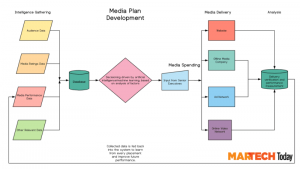Every business is made of interconnected dots, and each action has an equal consequence. For example, company culture impacts the team’s productivity, but also profit and revenues.
These connections are becoming more visible, especially knowing that organizations with strong cultures saw a four times increase in revenue growth.
Hence, most business leaders no longer perceive company culture as peripheral any longer. Instead, they are aware of its paramount importance and how it affects the overall workplace performance.
How does that affect HR professionals? What is their role in cultivating company culture and driving stellar profits?
Human resources play a significant role in preventing employee turnover and absenteeism and improving onboarding, engagement, productivity and diversity, equity, and inclusion. These have an undeniable impact on business outcomes and revenues.
Here is how HR professionals can work on these aspects to maximize ROI.
Start With a Strong Business Case
It is recommendable to set the ground for each project or undertaking, starting by establishing a great business case. It is the background of every initiative, the reason, and justification for your practices, leading up to the most favorable outcomes.
Here is how you can ensure a stellar business case and, ultimately, strategies for boosting the ROI.
Leadership-Employee Harmony
Each new initiative or technology requires both sides to be on the same page. That means you should ensure a harmonious collaboration between the leadership body and workers.
Even though there are many ways to accomplish that balance, it is recommendable to use a survey to gather both parties’ opinions. It is how you’ll comprehend what’s the most pressing issue and what the stakeholders need.
One side could find wellness critical, while the other may consider diversity to be more significant. HR professionals should address these issues and set proper objectives. Moreover, you should have a conversation with both parties to help them align their visions.
Set Precise Goals
New undertakings require communicating these updates with the leadership and employees and keeping the key takeaways from the survey in mind. Thus, analyze what is the potential ROI and share it with both parties. Make it your priority to realize these goals and connect them with the company’s existing and future objectives.
Comprehend the Data
Consider what will be your most accessible type of data and what kind of technology is at your disposal for meeting your goals and accomplishing the strategy. For example, perhaps you’ll use survey results on employee experience concerning diversity and inclusion initiatives.
Track the Strategy Progress
Implement regular reporting and talk about your strategy and its flow with the leaders and employees. Analyze quantitative outcomes compared to quarter ROI results. Remember to include qualitative findings too, which you can source from employee feedback.
Share the progress with the team to ensure transparency and rectify potential issues.
After you set the ground for implementing strategies, you can move on to improving ROI.

3 Ways HR Can Influence ROI
-
Support the Managers
Even though CEOs and superiors have a dominant role in developing and instilling company culture, managers encourage employee engagement. They have the power to improve the workplace environment, emphasize a sense of belonging, and help teams overcome challenges.
With their initiatives, managers can prevent employee turnover and increase satisfaction, positively impacting ROI. However, HR professionals should ensure that managers invest enough time and effort in human-centric issues.
It is how they can boost productivity and foster close connections between employees, helping the company culture thrive.
-
Pay Attention to Employees’ Needs
Both business and employee satisfaction are prone to changes, especially during the pandemic. Hence, HR professionals should listen to the workplace pulse and what workers need. That includes regular monitoring and aligning the strategies with the employees’ responses.
It is not enough to wait for annual survey results and performance insights. Instead, HR teams should incorporate active listening to spot possible issues timely and rectify them before they worsen.
For example, if execs notice that workers aren’t satisfied with the well-being program, HR professionals can address this problem before potential turnover. By paying attention to what the staff needs, they can tweak their initiatives and help the best ROI outcomes.
-
Leverage Technology
Human resources are inseparable from technology as it automates many processes and helps HR professionals achieve a lot quickly. Advanced tech eliminated tedious tasks, speeds up procedures, and it removes bias from resume parsing.
All in all, when combined with the latest and most compatible technology, HR becomes more efficient and productive. However, HR professionals should re-evaluate their tech platforms and consider whether it’s helping them achieve ROI.
Technology should align with your business niche and goals to deliver the best results and accomplish goals. It is where employees’ needs and opinions enter the picture again. Listen to their suggestions and measure whether your current tech solutions help you reach the objectives.
Regardless of their efforts, it can be challenging for HR professionals to deliver ROI and ensure their strategies result in the desired outcomes. However, by setting stellar grounds, leveraging proper tools, and empowering employees and managers, it’s achievable.
Business & Finance Articles on Business 2 Community
(28)






